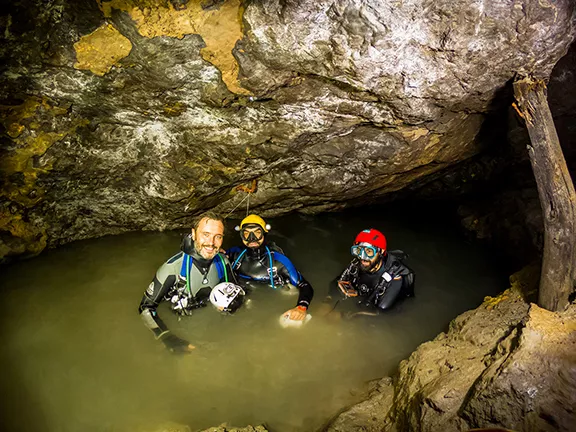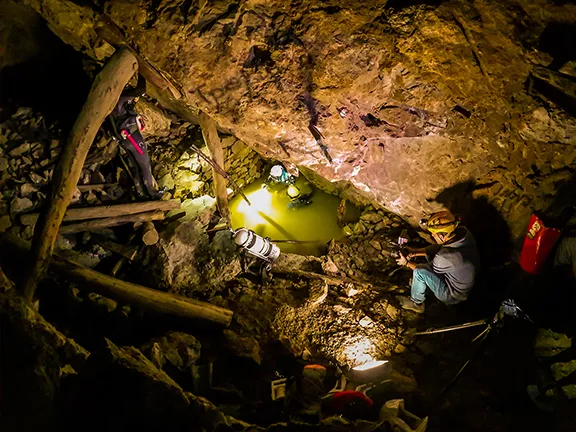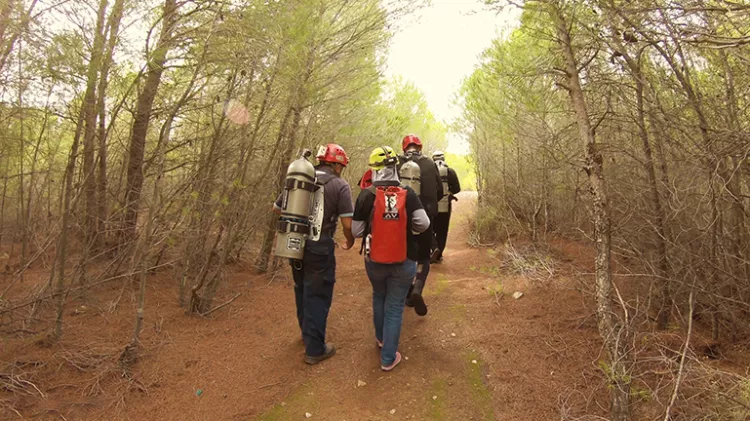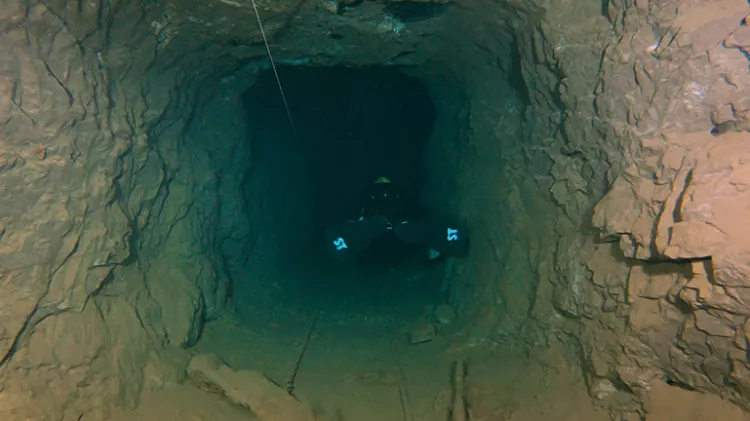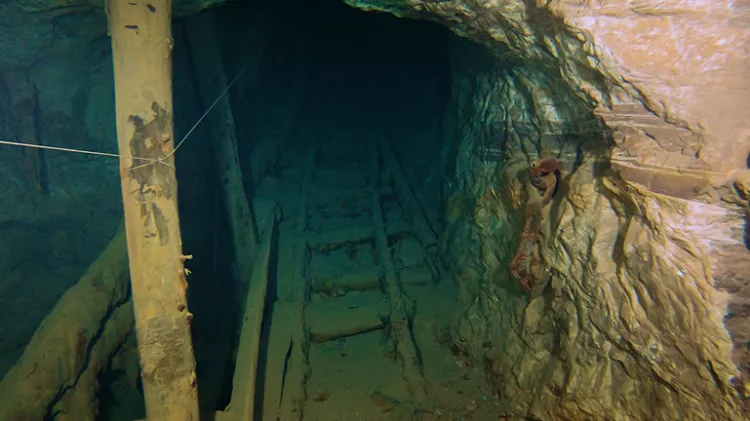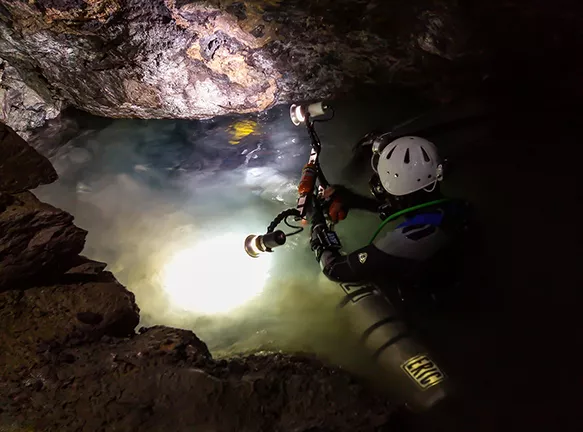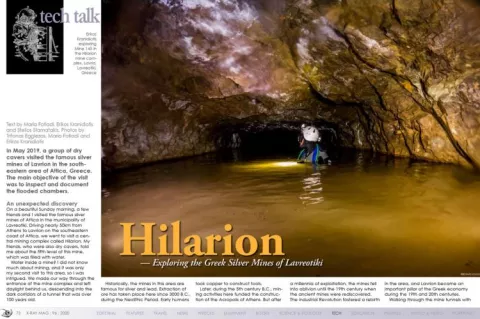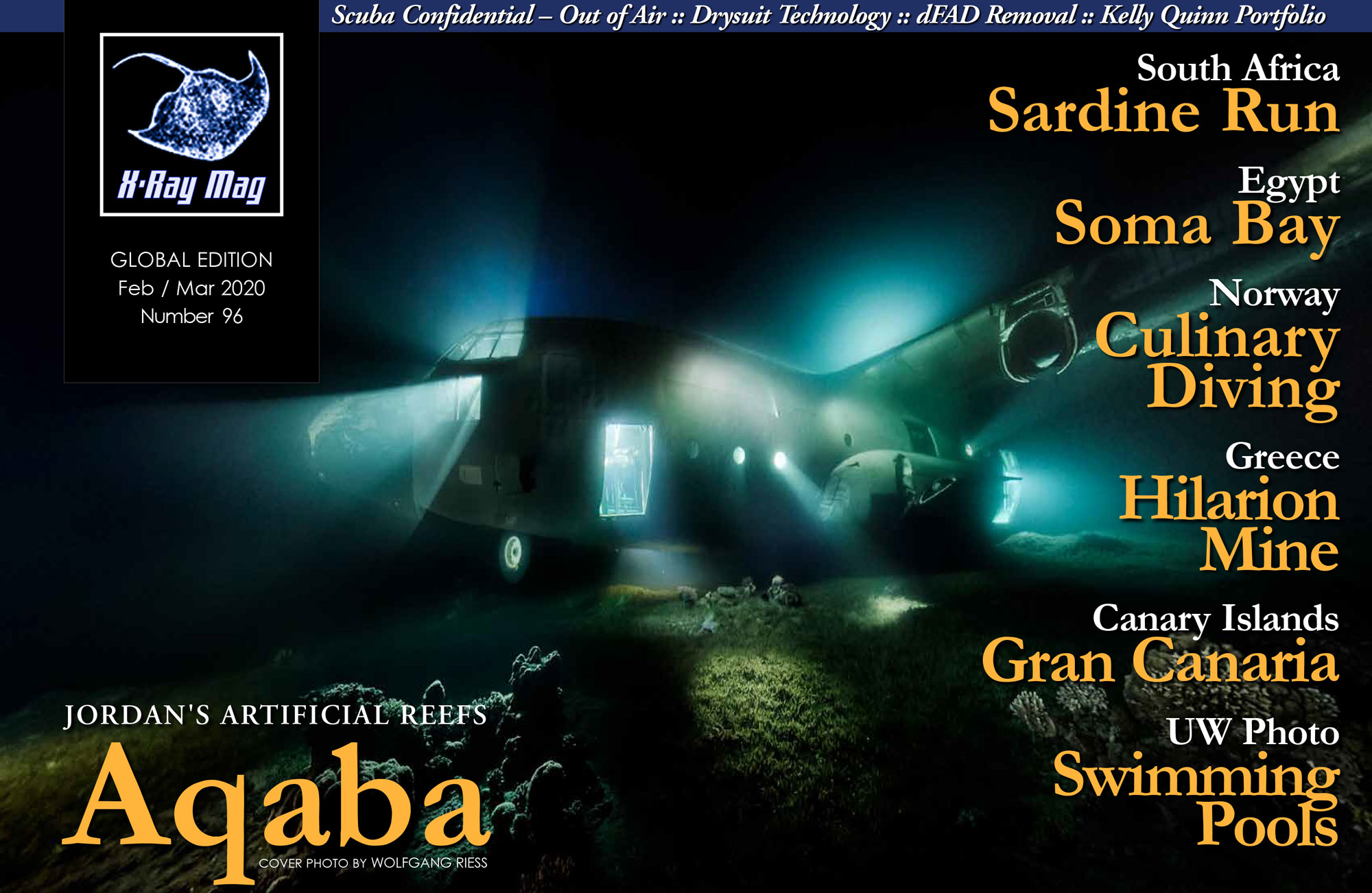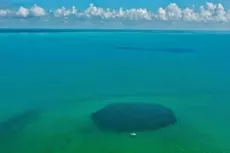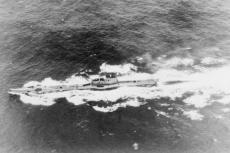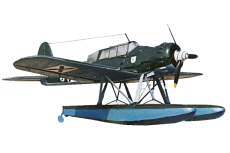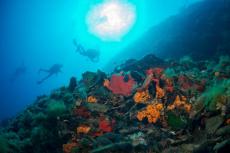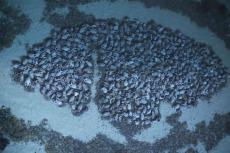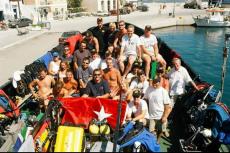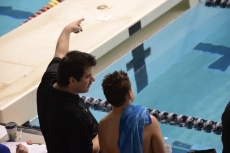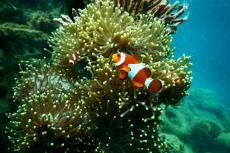In May 2019, a group of dry cavers visited the famous silver mines of Lavrion in the southeastern area of Attica, Greece. The main objective of the visit was to inspect and document the flooded chambers.
Contributed by
Factfile
The Addicted2H2O exploration team will be at TekDive USA 2020 in Orlando, Florida, USA, from 24 to 26 April 2020 (tekdiveusa.com).
For more information about the expeditions to the Hilarion mine complex, please visit the official site at: addicted2h2o.com.
Maria Fotiadi is an archaeologist and recreational diver. Erikos Kranidiotis and Stelios Stamatakis are cave and technical divers.
On a beautiful Sunday morning, a few friends and I visited the famous silver mines of Attica in the municipality of Lavreotiki. Driving nearly 50km from Athens to Lavrion on the southeastern coast of Attica, we went to visit a central mining complex called Hilarion. My friends, who were also dry cavers, told me about the fifth level of this mine, which was filled with water.
Water inside a mine? I did not know much about mining, and it was only my second visit to this area, so I was intrigued. We made our way through the entrance of the mine complex and left daylight behind us, descending into the dark corridors of a tunnel that was over 100 years old.
Historically, the mines in this area are famous for silver and lead. Extraction of ore has taken place here since 3000 B.C., during the Neolithic Period. Early humans took copper to construct tools.
Later, during the 5th century B.C., mining activities here funded the construction of the Acropolis of Athens. But after a millennia of exploitation, the mines fell into oblivion until the 19th century when the ancient mines were rediscovered. The Industrial Revolution fostered a rebirth in the area, and Lavrion became an important pillar of the Greek economy during the 19th and 20th centuries.
Walking through the mine tunnels with my friends, my thoughts went to the miners of old. These people spent hours in the dark, working in poor conditions, with just the light from a head lamp for company. Semi-collapsed chambers, wooden beams supporting the ceilings and rusty rail tracks were a common sight. Out of the 5,470 unique mineral specimens found worldwide, almost 700 come from Lavrion mines. And in the Lavreotiki municipality specifically, there are also unique specimens, some of which are of exceptional quality.
The end of mining activity in the 1980s and the subsequent abandonment of the mines have led to extensive damage in the passages. Evidence of this can be found in the form of trash left in some parts of the mine by disrespectful visitors.
Walking on slippery terrain, we saw an increase of water in the mine’s passages and humidity became more intense after the fourth level. After more than an hour, we finally reached a large chamber filled with water. It was an extraordinary sight to see this subterranean lagoon. It was obvious that the chamber continued underwater. But this was the end of the line for me.
Taking the plunge
When I got home, I could not stop thinking about this unique site for the next few days. What was down there and how far did it go? I had to find out somehow. However, it was difficult to find willing and experienced cave divers in Greece. But I had something in mind. I knew two divers who were experienced both in cave diving and deep wreck diving—the Addicted2H2O team. I contacted them immediately, sharing my photos and videos with one inquiry: “Are you interested in exploring this site?”
They got back to me, excitedly writing: “Mine diving in Greece? That would be something different for sure!” We started conversing over e-mail, had endless phone calls and set up a meeting on-site in order to evaluate the difficulties of this project.
The most difficult aspect of the endeavor was to safely navigate inside the dry parts of the mine tunnels to reach the flooded chambers. Another major difficulty would be to get the equipment down to the sump. An hour-long walk on muddy and rocky terrain was a difficult task on its own. But Erikos and Stelios were willing to pull through it. We all met again at Lavrion: the dive team of Stelios and Erikos, and the surface support team of Konstantinos (a PADI Instructor and fellow diver) and me.
Carrying the heavy equipment was a hell of a thing. But the team managed it well. After resting, Erikos and Stelios started their dive, descending into the water for the first time.
First expedition
Underwater, the dive team found that the mine continued its course in a complex section of chambers formed of natural rock. At least two of the chambers had entrances with wooden support columns, while remnants of rail tracks leading to the heart of the mine were found in situ.
During the first exploration, which took place on 20 July 2019, the dive team found three main corridors. They followed the main central corridor, which led to another chamber comprising three different intersections. Continuing straight ahead, they found the main corridor, supported with four rows of wooden beams.
At this point, Erikos and Stelios returned to the support team, because the first and main objective of this dive was to check and evaluate the conditions of the underwater part of the mine and to see if the mine extended farther.
The water was freshwater coming out of the aquifer at 20°C,. Previously, it had been thought that the water in the mine would be seawater, due to the proximity of the Lavrion region to the sea (Saronic Gulf). This turned out not to be true.
During the mine’s active period, water had been pumped out so the ore could be extracted. So, when mining works ceased, the tunnels filled with groundwater, which sealed the mine completely.
According to the dive team, the visibility was amazing. The only difficulty underwater occurred on the way back. Scuba bubbles and fin movements during entry stirred up silt and decreased the clarity of the water, causing loss of visibility—an expected phenomenon in cave diving.
Second expedition
On 19 November 2019, our team returned to the site and continued underwater filming. The support team had more members this time, and we transported the dive equipment again 500m inside the mine to a depth of 120m.
This time, the dive team penetrated the sixth level of the mine and managed to explore and confirm that all three sections found on the first expedition were linked together and interconnected. Passages were found directly below the flooded area that resembled a subterranean “lagoon.” But there was also a fourth corridor, which was located in another section nearby, that could be accessed both underwater and by foot from the dry part of the mine. From this area, there was a narrow entrance point, with a downward slope, leading to a flooded section with rail tracks, dating to at least the 1930s.
Our belief was that these various parts were linked, and the dive team also confirmed it underwater. The railway connected the dry fourth level of the mine with the underwater sixth level, and it was used to extract ore via wagons. Furthermore, this led the divers to discover a new connecting underwater section , thus providing the divers with an alternative exit nearby in case something went wrong. Now, the team can focus on exploring the main passage farther.
A Greek mine quest
The first underwater images from the Lavrion mines made a great impression on the diving community in Greece. Mine diving and exploration are not developed in Greece at all. Starting from the Hilarion Mine, the team, assisted by local explorer Vassilis Stergiou, visited other parts of this vast complex, which covers over 120 sq km.
So far, five different underwater sections, with more than one intersection in some cases, have been rediscovered and explored. Every one of these tunnels has unique characteristics and different levels of difficulties for the dive team to overcome.
Members of the dive team believe they have only begun to scratch the surface of perhaps one of the oldest and most iconic mine sites in the world. The team members, however, do agree on one thing: It is the element of water that has protected and preserved the mine as it was when the miners of old ceased their works.
Divers experienced a sense of awe in the flooded mine. It was like going back in time; you could almost see faint images of the people who worked under such adverse conditions.
One thing is for sure: Mine diving in Greece is now a fact, thanks to the Addicted2H2O Greek diving team, and there will be more to report in the future. ■

